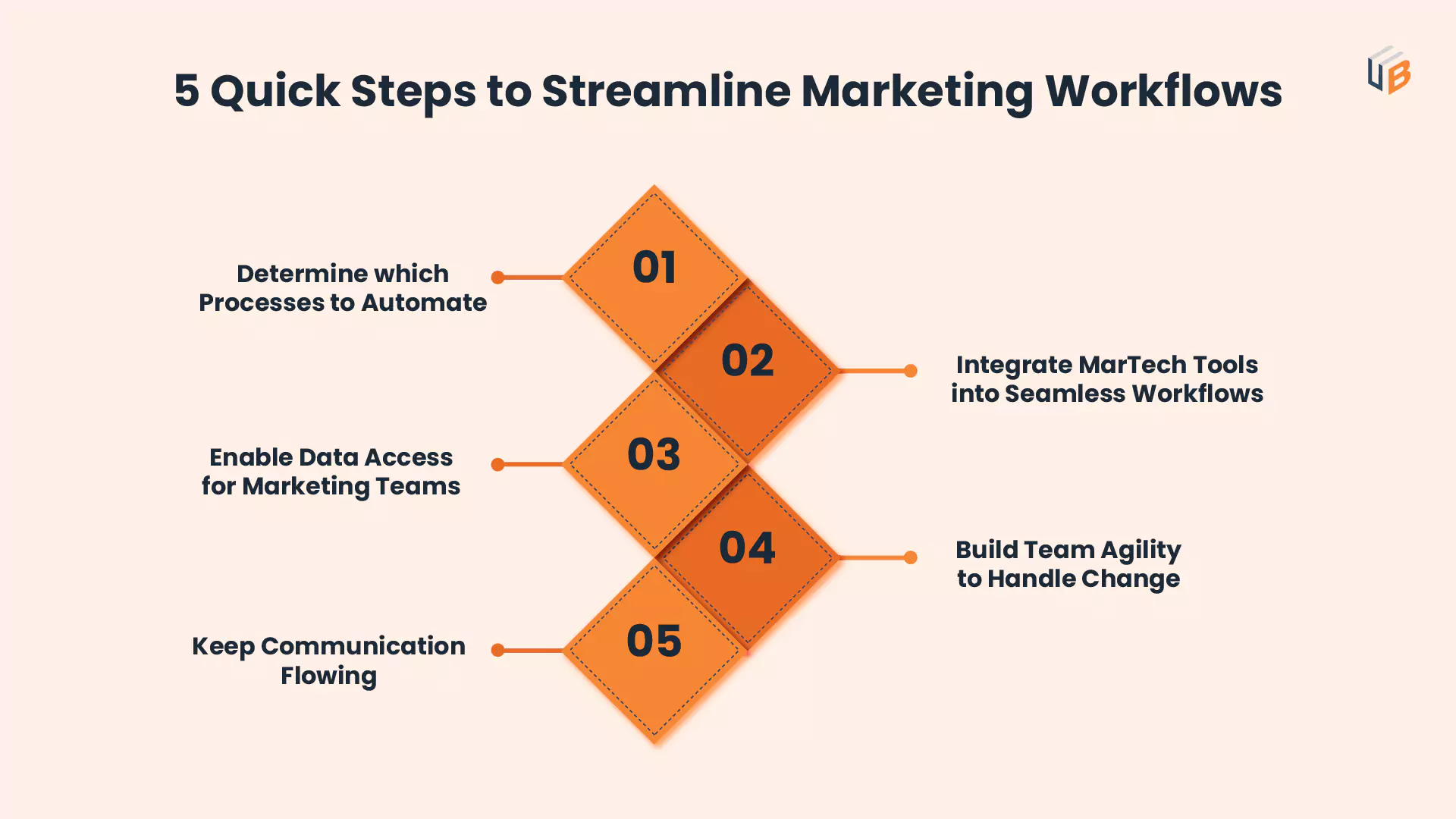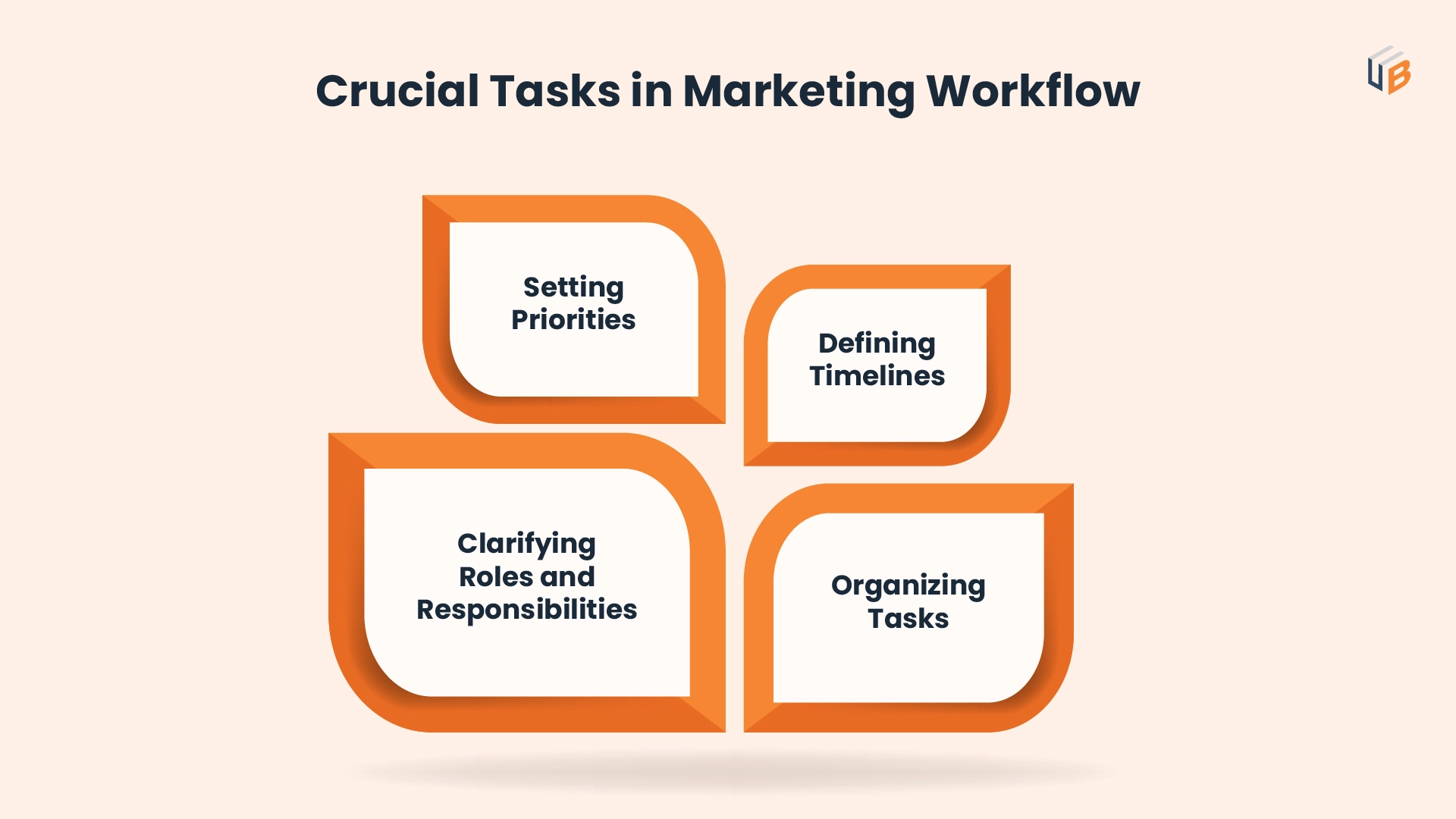
From unrealistic customer demands and missed deadlines to constant interruptions and endless meetings, marketing teams struggle with many challenges.
By facilitating marketing workflow management, MarTech integration helps them to overcome these challenges. In today’s evolving digital environment, workflow tools are the engine that powers B2B marketing strategies.
They are the link between the actions marketing teams take and optimal utilization of available marketing resources. Marketing departments rely on workflow tools for convenience, cost-effectiveness, and results. Conversions increased for 77% of marketers that used marketing automation solutions.
If not properly streamlined, workflows can lead to inefficiencies that slow marketing efforts down and lead to losses in a business. MarTech integration ensures marketing tools work flawlessly to create a digital ecosystem that gives marketers real-time access to customer and marketing campaign performance data.
In this article, we explain marketing workflow management and show how you can use MarTech integrations to simplify it.
What is Marketing Workflow Management?
Marketing workflow management refers to the sequence of steps a company follows to formulate and manage a marketing project or campaign. It’s an integral part of the workflow process in the marketing department. Workflows define the various stages a marketing team has to complete when implementing big tasks. They involve:

Though based on the same principles, workflow designs can vary from one company to another, or from one task to another. They can be outlined in checklists, flow charts, visual diagrams, or spreadsheets. Some workflows are elaborative and others are straightforward, depending on what a business requires.
Marketing managers use marketing workflow tools to create consistency in marketing projects or campaign processes. The main focus is to optimize team performance and reduce the amount of work they have to do to launch marketing campaigns.
MarTech workflow tools offer features like task assignments, templates, and visualizations that support workflow efficiency. The best workflow tools are:
- Logical: They allow teams to build consensus regarding the information they need to make work predictable.
- Accessible: They are easy to use and your team can find them without too much hassle.
- Iterative: They can be tweaked or adjusted with ease.
How Does MarTech Integration Simplify B2B Marketing Workflows?
Integration ensures that all the tools you have in your MarTech stack work well together. As MarTech gets more complex and client expectations soar, integration helps brands to conduct marketing activities more efficiently and effectively.
B2B marketers can integrate MarTech tools to improve workflows and simplify time-consuming processes. Here are five ways MarTech integration can streamline workflows in your business:
1. Efficient Management
Marketing managers can use workflow tools to coordinate their teams, irrespective of where they work from. For enterprises that have operations running globally, this coordination enhances accountability and ensures consistency in all markets.
2.Task Automation
Automating tedious saves time, reduces errors, and improves efficiency. Workflow tools allow users to create templates that reduce repetitive tasks. For instance, marketing managers can automate client onboarding or check-up processes by creating tools and structures that can be reused each time the need arises.
3. Better Reporting
MarTech workflow tools come with customized reporting templates that make reporting easier and faster. Most tools allow marketing teams to share reports. This gives every stakeholder, including the top management, a chance to know how each marketing campaign is progressing.
4. Planning and Resource Distribution
Most workflow tools use visualizations to give marketers a view of different marketing projects or campaigns from a single dashboard. With this information, marketing managers can adjust tasks, schedules, and redistribute the resources available to facilitate timely delivery of projects.
5. Better Collaboration
Workflow tools enhance team collaboration by providing users with file-sharing and digital asset management features. Marketing teams can upload files, or share them via cloud storage. These features facilitate reviews and approvals of marketing assets like creatives. Marketing workflows also improve communication between teams by facilitating documentation of important conversations, decisions, reviews, tasks, and anything else your team needs to know.
Streamline Marketing Workflows in 5 Quick Steps
Although MarTech has inherent capabilities for improving workflow efficiency, businesses need to plan well to realize these benefits. Below are 5 steps to simplify workflows with MarTech integration:

1. Determine which Processes to Automate
- Audit current workflow processes to identify areas where manual efforts exist. Prepare a list of what your marketing processes look like. Get feedback from the people who do the work- they can help you break the process down into smaller steps.
- Look out for inefficiencies. Pay attention to areas that are prone to errors, delays, high costs, as well as repetitive, high-volume tasks.
- Determine the changes you want. These changes could relate to reducing costs, improving access to brand assets, reducing reliance on external creatives, or fast-tracking content creation.
- Prioritize these processes so you know which one to streamline first.
2. Integrate MarTech Tools into Seamless Workflows
This step involves identifying fragmented processes that exist in each marketing platform that your company uses. Determine how data moves across marketing platforms and develop ideal workflows. Evaluate the APIs of each platform to determine compatibility and use integration platforms to connect the platforms. With this done, set triggers and rules to facilitate seamless marketing workflows.
3. Enable Data Access for Marketing Teams
Determine which data analytics your team needs and create easy-to-use dashboards that everyone can access from a central location. Consider enabling self-service data access using business intelligence tools. You should empower your team members on how to use workflow tools. Ensure everyone understands the features of each tool and how they can help the team achieve its marketing goals. To do this, organize training sessions, prepare tutorials, or provide other resources to help your team become conversant with the tools quickly.
4. Build Team Agility to Handle Change
Marketing teams should be able to adjust to changes quickly and with minimal disruptions. Assess the process of adjusting workflow teams and use sandboxes to test any changes securely. Anticipate configuration updates on the tools you have in your marketing stack and put in place procedures for handling those updates. Monitor automated marketing workflows frequently to identify gaps and opportunities to optimize.
5. Keep Communication Flowing
Marketing operations will only be streamlined if your team understands the workflow process. Leverage collaboration tools to keep your team informed and break internal silos. Make analytics, reports, and dashboards visible to your teams. Keep them informed about common success metrics and key performance indicators while encouraging a culture of communication.
Best Practices in Streamlining Marketing Workflows
While workflow tools are useful in simplifying marketing processes, they won’t cure every issue that your team may be facing. Workflow efficiency can only happen if these tools are complemented by clear operational procedures and a shift in company culture. Here are the best practices to bear in mind when streamlining workflows in your marketing department:
1. Clarity of Marketing Processes
Marketing workflows should be broken into small, simple steps that everyone in your team can follow with ease. Check with the members of your team to ensure they all understand the entire workflow before you finalize and disseminate them.
2. Definition of Roles and Responsibilities
The roles and responsibilities of each member in the marketing department should be clear. Clarifying what each team member is expected to do facilitates teamwork. It also prevents misunderstandings and confusion while ensuring that everyone remains accountable for delivering their tasks.
3. Giving and Receiving Feedback
Every member of your team must pull in the same direction for marketing projects and campaigns to succeed. To achieve this, you’ll need to share appropriate workflows with your team, inform them of any changes in the workflows, and get their feedback. This is important because if something in the workflow doesn’t work as expected, they’d be the first to know.
4. Reviewing and Optimizing Workflows
The fact that your workflows work well immediately after you introduce them doesn’t mean that will always be the case. You need to track results and optimize the workflows regularly to ensure they’re helping you achieve your marketing goals. There are times when you’ll have to make adjustments like changing designated personnel and software tools. These changes, whether big or small, can have a significant impact on your marketing workflows.
Supercharge Marketing Strategies with Workflows
Workflow tools can empower your team to manage marketing processes seamlessly and improve productivity. With these tools, coordinating teams and delivering marketing projects or campaigns becomes easier. It’s also easier to know which aspects of the marketing process need improvement. When investing in workflow tools, consider how they integrate with your current MarTech tools. This will ensure a seamless flow of data, insights, and communication across teams and departments, leading to better lead generation and personalized client experiences.
Our blog
Latest blog posts
Tool and strategies modern teams need to help their companies grow.

This comprehensive guide covers everything about service marketing—its unique chara...

Believe it or not, the concept of content sharing existed long before the Internet. I...

Sales analysis is essential to avoid inaccurate forecasts and identify improvement op...




